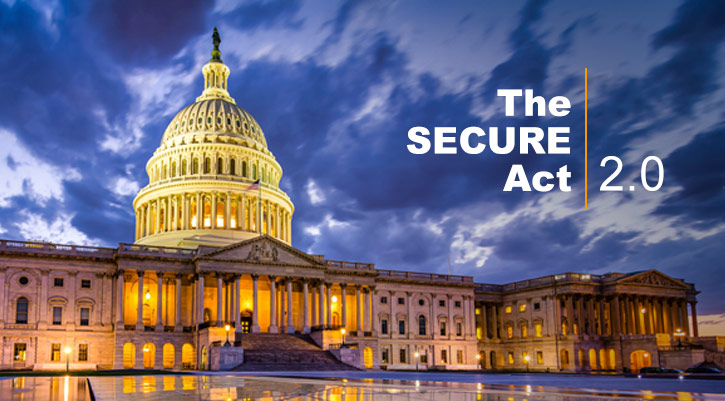This article is from our colleagues at Business & Estate Advisers.
What Does SECURE 2.0 Mean for Me?
SECURE 2.0 is designed to make retirement savings easier and the process less cumbersome.
When Was SECURE 2.0 Enacted?
On December 29, 2022, the Consolidated Appropriations Act of 2023 was signed into law. In essence, this was the budget and funding for the government for 2023. Incorporated into this law (which was over 4,000 pages) is about 300 pages of legislation to make saving for retirement easier through the Strong Retirement Act of 2022, commonly referred to as SECURE 2.0. This nickname is a result of this Act building upon the 2019 Setting Every Community for Retirement Enhancement (SECURE) Act.
What Do I Need to Know?
Some key provisions of the Act, by date of enactment, are listed below.
Effective in 2023:
- Increasing Age for Required Minimum Distributions: Required minimum distributions (RMDs) are now required at age 73 (versus age 72) starting in 2023 and at age 75 starting in 2033.
- Required Minimum Distribution Penalty Cut: The penalty for failing to take a required minimum distribution (RMD) will decrease to 25% of the RMD amount (from 50% currently) and 10% if corrected in a timely manner for IRAs.
- Qualified Charitable Distribution: Individuals can make a one-time $50,000 charitable distribution to a charitable trust or charitable annuity. Starting in 2024, the annual limit of $100,000 will be indexed for inflation.
- Roth Simple and SEP IRAs: Participants can now make Roth contributions to SIMPLE and SEP IRAs.
- Roth Matching Contributions Allowed: Employers have the option to allow the participant to elect to have employer contributions (match or profit sharing) to go into a Roth account. Participants will pay tax on these amounts if they elect this.
- Expanding Tax Credits for Small Business New Retirement Plan: Expanded the current credit from 50% to 100% as well as added new credits for employer contributions of up to $1,000 per employee.
- Hardship Distribution Employee Certification: Employers may now allow employees to self-certify if they have met the conditions for a Hardship Distribution.
- Eliminating Required Notices: Employers are no longer required to send intermittent notices to unenrolled employees provided they at least send an annual reminder of the participant’s eligibility.
Learn What’s Effective in 2024 & 2025
Source: www.finance.senate.gov

